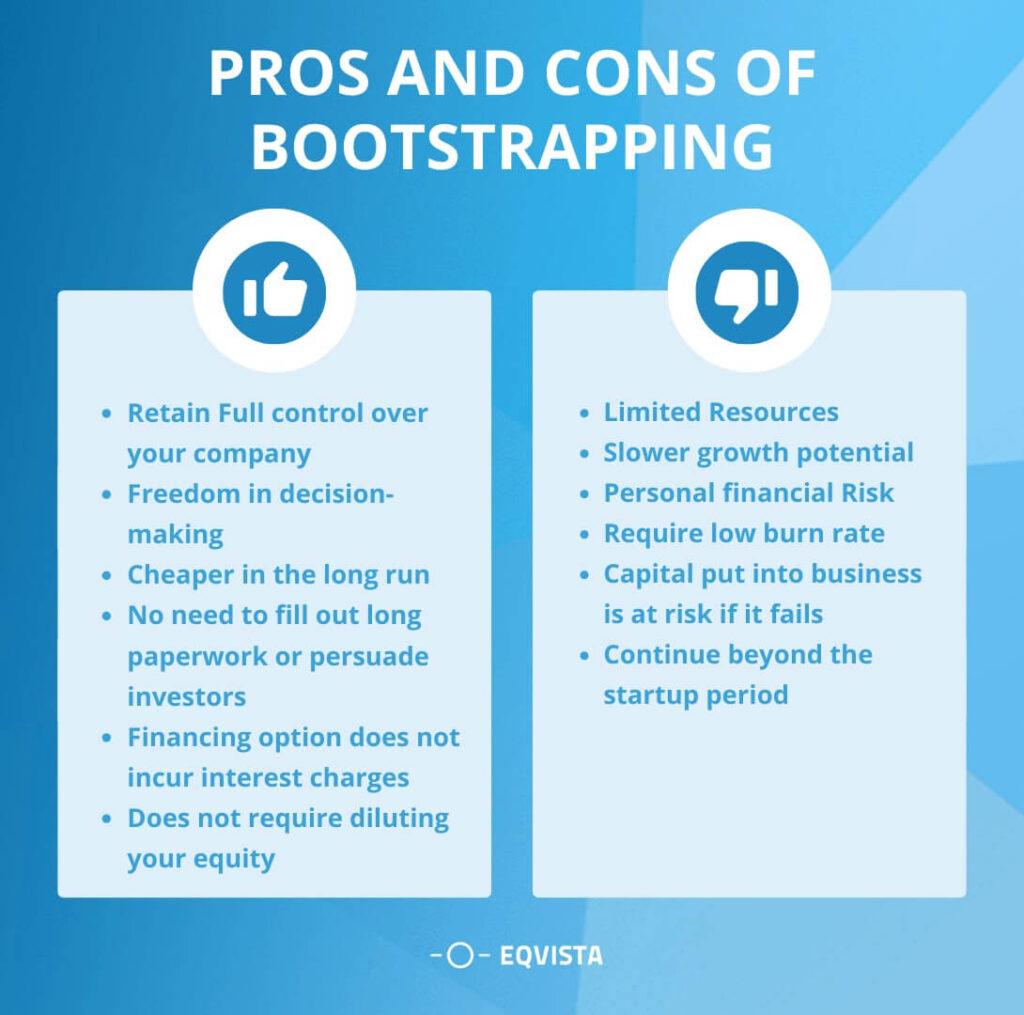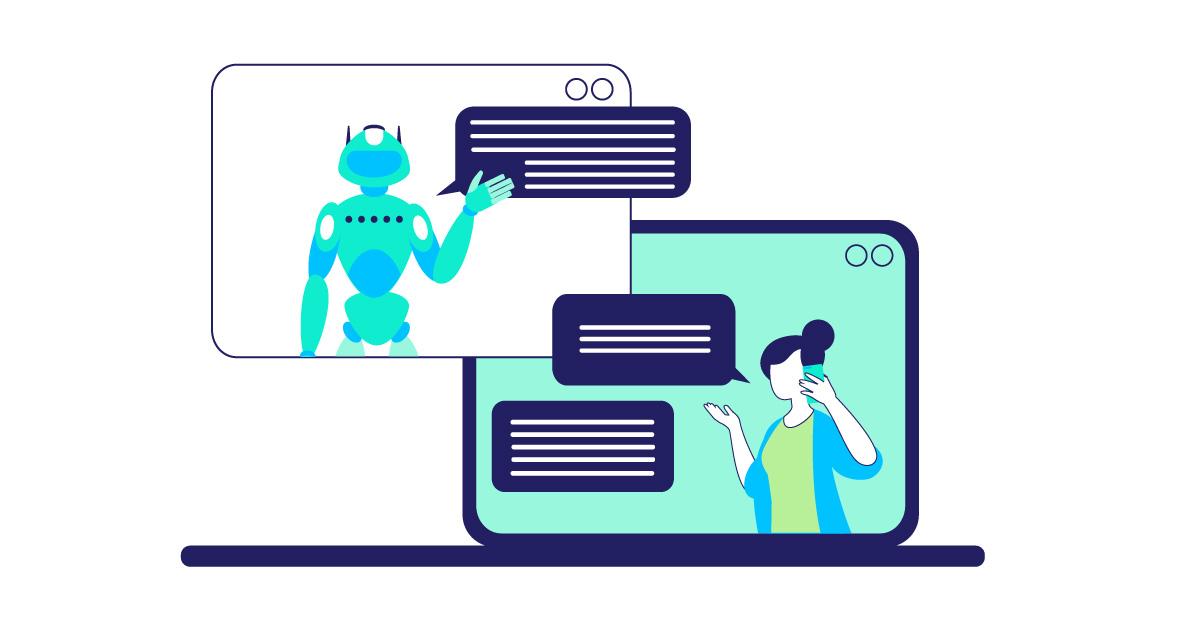
Hey there, fellow freelancers! If you’re anything like me, you’ve probably found yourself juggling a million tasks at once, trying to squeeze every last drop of productivity out of the day. The freedom of freelancing is exhilarating, but let’s be real: it can also lead to some serious overwhelm. Between managing multiple clients, tight deadlines, and the ever-present temptation of binge-watching your favorite series, staying on top of your time can be a real challenge.
But fear not! In this article, we’re diving into 21 practical time management tips tailored specifically for freelancers like you. These strategies are designed not only to help you maximize your productivity but also to keep burnout at bay. After all, the last thing we want is to trade our passion for freedom for a stress-induced meltdown. So grab your favorite cup of coffee, and let’s explore how you can reclaim your time and sanity while thriving in the freelance world!
Understanding the Freelancers Juggling Act
Freelancing can be a thrilling yet challenging journey, often resembling a high-stakes juggling act where one must balance multiple clients, deadlines, and personal commitments. To navigate this intricate dance, effective time management becomes essential. The freedom to choose your projects and set your own hours can be liberating, but it also requires discipline and strategy to prevent the overwhelming feeling of burnout.
One of the most crucial aspects of managing your time effectively is setting clear boundaries. Define your working hours and communicate them to your clients. This not only helps you maintain a work-life balance but also sets expectations for availability. Consider using tools like shared calendars to keep everyone on the same page.
Another powerful strategy is to prioritize your tasks. Use the Eisenhower Matrix to distinguish between what’s urgent and important versus tasks that can wait. This matrix will help you focus on what truly drives your business forward. By categorizing your tasks, you can allocate your time more efficiently and reduce the stress of last-minute rushes.
In addition to prioritization, employing the Pomodoro Technique can transform your productivity. Work in focused bursts of 25 minutes followed by a 5-minute break. This method not only enhances concentration but also provides your mind with necessary downtime, helping to stave off burnout. Here’s a simple format you can follow:
| Session | Duration |
|---|---|
| Work Session | 25 minutes |
| Short Break | 5 minutes |
| Long Break | 15 minutes (after 4 sessions) |
While it’s important to stay productive, it’s equally essential to embrace regular self-care. Ensure you’re dedicating time each week for activities that recharge your energy—whether it’s exercise, reading, or simply unwinding with a favorite TV show. Incorporating self-care into your routine will not only improve your overall well-being but also enhance your creativity and focus in your work.
Lastly, don’t hesitate to seek help when needed. Whether it’s outsourcing certain tasks or using technology to automate routine processes, leveraging support can free up valuable time. Explore tools like project management software or apps that can help streamline your workflow, allowing you to concentrate on the work that truly matters.
By embracing these strategies, you can master the art of juggling your freelance commitments without compromising your health or happiness. Remember, managing your time effectively is not just about filling your schedule; it’s about making deliberate choices that align with your goals and lifestyle.

The Importance of Setting Clear Goals
Setting clear goals is pivotal for freelancers. Without a roadmap, it’s all too easy to wander aimlessly through projects, leading to frustration, missed deadlines, and burnout. When you define your objectives, you not only clarify what you want to achieve but also create a structured pathway to get there.
Here are some reasons why establishing clear goals is essential:
- Direction: Goals provide a sense of direction. You know where you’re headed, which helps you prioritize tasks that align with your vision.
- Motivation: Clear goals can ignite your passion and motivate you to push through challenging projects. Each small victory along the way fuels your drive to keep going.
- Accountability: When you articulate your goals, you create a commitment to yourself. This accountability encourages you to stay focused and disciplined.
- Measurable Progress: Goals allow you to track your progress. By breaking them down into smaller, achievable milestones, you can celebrate your accomplishments, no matter how small.
To effectively set goals, consider the SMART criteria—Specific, Measurable, Achievable, Relevant, and Time-bound. This framework ensures that your goals are not only well-defined but also realistic and attainable.
| Goal Type | SMART Criteria |
|---|---|
| Increase Client Base | Specific: 5 new clients Measurable: Track new contracts Achievable: Network and market Relevant: Supports income growth Time-bound: Within 3 months |
| Improve Skills | Specific: Complete an online course Measurable: Course completion Achievable: Allocate 3 hours/week Relevant: Enhances service offering Time-bound: Within 6 weeks |
When you have well-defined goals, you can better allocate your time and resources. This strategic approach helps you avoid the common pitfalls of freelancing, such as overwhelm and burnout. You’ll find that with clearer objectives, you can say “no” to tasks or projects that don’t serve your overall mission, allowing you to focus on what truly matters.
take the time to reflect on what you want to achieve. Write down your goals, revisit them regularly, and adjust as needed. This ongoing process ensures that you remain aligned with your aspirations and can navigate the freelance landscape with confidence and clarity.
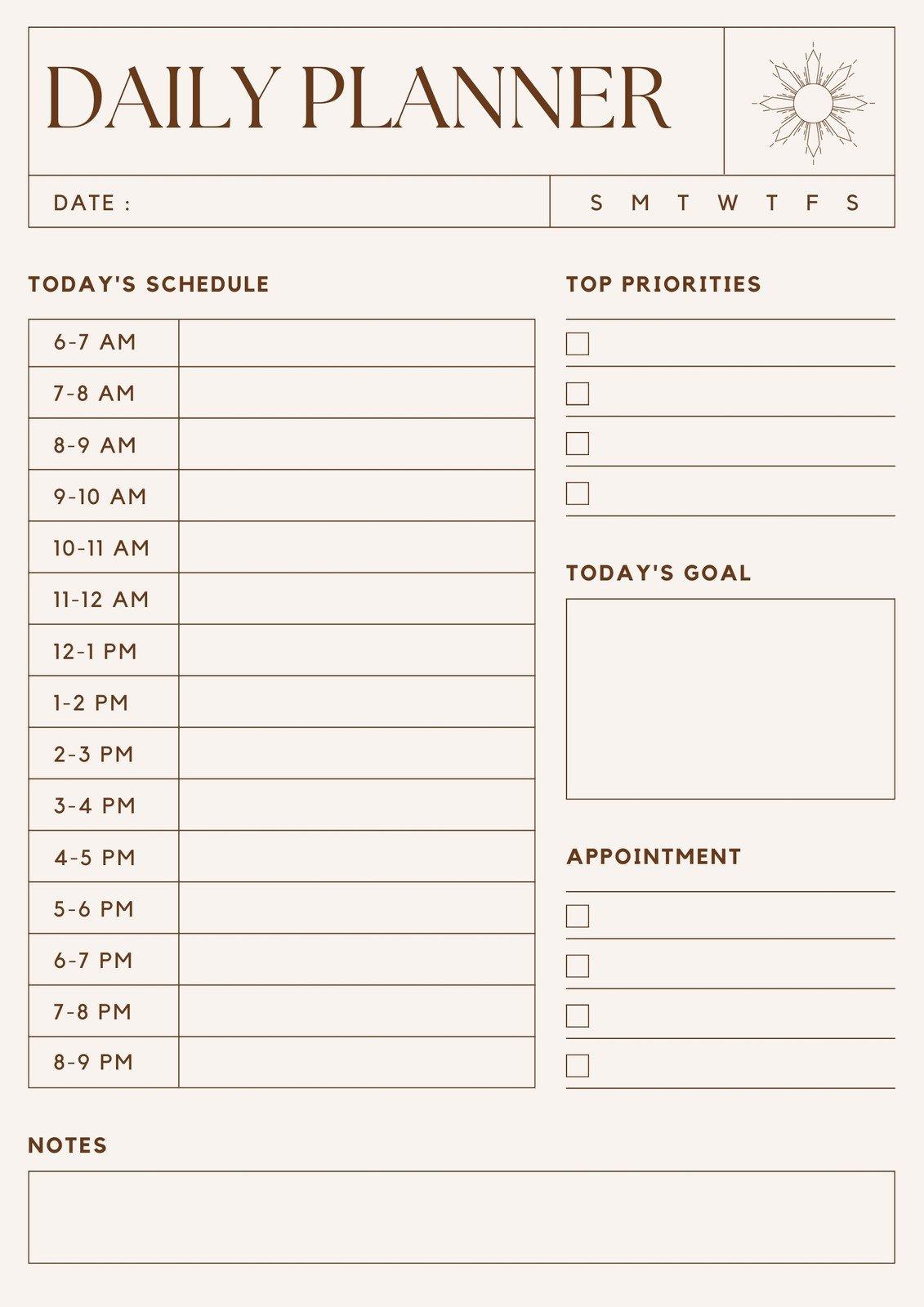
Crafting Your Ideal Daily Schedule
Creating your ideal daily schedule can feel daunting, but with the right approach, it can dramatically enhance your productivity and well-being. Start by identifying the times of day when you are most energetic and focused. For many, this might be in the morning after a good night’s sleep, while others may find their stride in the afternoon or evening. Understanding your natural rhythms is fundamental to crafting a schedule that works for you.
Next, consider the following elements to build your perfect day:
- Time Blocks: Allocate specific blocks of time for different tasks. For example, designate certain hours for deep work, meetings, and administrative tasks.
- Breaks: Don’t underestimate the power of breaks! Incorporate short breaks between work sessions to recharge your brain and maintain your focus.
- Flexibility: Leave room for spontaneity. Life as a freelancer can be unpredictable, so allow for adjustments in your schedule when necessary.
- Set Goals: Define daily and weekly goals. Having clear objectives helps you stay on track and gives your day more structure.
Another effective strategy is to use the Pomodoro Technique. This time management method encourages you to work in short bursts of focused activity followed by brief breaks. For instance, you could work for 25 minutes and then take a 5-minute break. This can help maintain high levels of productivity without leading to burnout.
It can also be beneficial to create a visual schedule. A weekly planner or digital calendar can help you visualize your commitments and deadlines at a glance. Here’s a simple table to illustrate how you might structure your day:
| Time | Activity |
|---|---|
| 8:00 AM – 9:00 AM | Morning Routine & Breakfast |
| 9:00 AM – 11:00 AM | Deep Work Session |
| 11:00 AM – 11:15 AM | Short Break |
| 11:15 AM – 12:30 PM | Client Meetings |
| 12:30 PM – 1:30 PM | Lunch Break |
| 1:30 PM – 3:30 PM | Project Work / Research |
| 3:30 PM – 3:45 PM | Short Break |
| 3:45 PM - 5:00 PM | Wrap Up & Plan Tomorrow |
as you design your schedule, be sure to include time for self-care. Whether it’s a workout, reading, or spending time with loved ones, these activities are crucial for maintaining your enthusiasm and creativity as a freelancer. Remember, a well-rested mind is a productive one!
In essence, your daily schedule should not only focus on work but also reflect your personal needs and aspirations. Strive for a balanced approach that promotes both productivity and personal fulfillment.
Mastering the Art of Prioritization
When it comes to managing your time as a freelancer, mastering the delicate balance of prioritization can make all the difference. With a myriad of tasks and projects constantly vying for your attention, knowing how to discern what truly matters is key to achieving your goals without succumbing to burnout.
Start by identifying urgent versus important tasks. Not every task that feels urgent is truly important to your long-term success. One effective method is the Eisenhower Matrix, which divides tasks into four categories:
| Quadrant | Description |
|---|---|
| Urgent and Important | Tasks that need immediate attention. |
| Not Urgent but Important | Tasks that require planning and strategy. |
| Urgent but Not Important | Tasks that can be delegated or minimized. |
| Not Urgent and Not Important | Tasks that can often be eliminated. |
Next, it’s beneficial to set clear deadlines. Even if a project doesn’t have a specific due date, assigning yourself a timeline can help create a sense of urgency. This practice not only keeps you accountable but also ensures that you are focusing on your most vital tasks first.
Additionally, consider using a task management tool that aligns with your working style. Whether it’s a simple to-do list or a robust project management software, having a visual representation of what needs to be done can enhance your ability to prioritize effectively. Keep in mind:
- Be flexible: Sometimes, priorities shift. Don’t hesitate to reassess your list as necessary.
- Limit your daily tasks: Aim for 3-5 primary tasks each day to maintain focus and avoid overwhelm.
- Review regularly: Spend a few minutes at the end of each week to review what you accomplished and adjust your priorities for the next week.
One more technique to lighten the load is to use the “two-minute rule.” If a task takes less than two minutes to complete, do it immediately. This concept not only clears small tasks quickly but also boosts your momentum throughout the day.
Lastly, don’t forget to factor in self-care as a priority. Schedule breaks, engage in activities you love, and make time for exercise. A well-rested and happy freelancer is far more productive than one who is constantly running on empty. By making prioritization a habit, you’ll find that you can accomplish more in less time while keeping burnout at bay.
Harnessing the Power of Time Blocking
Time blocking is a game changer for freelancers striving to balance multiple projects and avoid burnout. By allocating specific blocks of time to distinct tasks, freelancers can create a structured flow to their day that maximizes productivity and minimizes distractions. Imagine knowing exactly what you’re supposed to be working on at any given moment—sounds liberating, right?
To harness the full potential of time blocking, consider the following steps:
- Identify Your Priorities: Start by listing your most critical tasks and deadlines. Knowing what needs your attention first will help you allocate your time more effectively.
- Set Specific Blocks: Divide your workday into chunks—typically 30 minutes to 2 hours. Assign specific tasks to each block, ensuring a balance between deep work and lighter tasks.
- Include Breaks: Don’t forget to schedule short breaks between blocks. This not only enhances productivity but also prevents mental fatigue.
A great way to visualize your time blocks is by using a calendar tool. Whether it’s Google Calendar, Trello, or a simple planner, having a visual representation makes it easier to stick to your schedule and adjust as needed.
| Time Block | Task | Duration |
|---|---|---|
| 9:00 AM - 11:00 AM | Client Project A | 2 hours |
| 11:15 AM – 12:15 PM | Emails & Calls | 1 hour |
| 12:15 PM - 1:15 PM | Lunch Break | 1 hour |
| 1:15 PM – 3:15 PM | Client Project B | 2 hours |
| 3:30 PM – 4:30 PM | Social Media Management | 1 hour |
One of the biggest advantages of time blocking is its flexibility. If something urgent comes up, you can easily adjust your blocks without completely derailing your day. This adaptability not only helps you deal with unforeseen projects but also empowers you to plan for your personal life and downtime, essential for maintaining your well-being.
Additionally, try to reflect on your time blocks regularly. At the end of the week, evaluate what worked and what didn’t. Did you overestimate how much you could get done? Were certain tasks more taxing than anticipated? Adjusting your approach based on these insights will continually refine your time blocking strategy, making it more effective for you.
Incorporating time blocking into your routine isn’t just about being productive; it’s also about creating a sustainable working environment. By clearly defining your work hours and respecting them, you can establish healthy boundaries that protect you from burnout, allowing you to enjoy your freelance journey to the fullest.
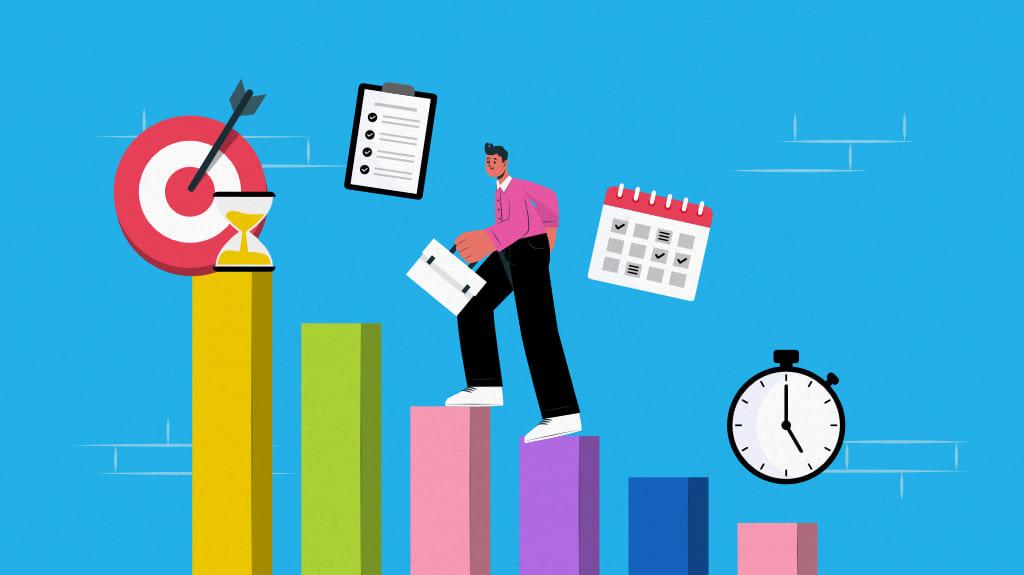
Utilizing Productivity Tools That Work for You
For freelancers juggling multiple projects, finding the right productivity tools can make all the difference. The right tools not only streamline your workflow but also enhance your focus, ultimately leading to better results and reduced stress. Here are some essential categories of tools to consider:
- Task Management Apps: Tools like Todoist and Trello help you keep track of deadlines and prioritize tasks effectively. Create boards or lists to visualize what needs your attention the most.
- Time Tracking Software: Applications like Toggl or Harvest allow you to log hours spent on different projects. This not only helps in billing clients accurately but also provides insights into how your time is allocated.
- Communication Platforms: Slack and Microsoft Teams facilitate seamless communication with clients and collaborators. Choose tools that allow you to centralize discussions and reduce email clutter.
- Focus Tools: If distractions are your nemesis, consider using tools like Forest or Focus@Will. They create an environment conducive to concentration, helping you stay on task.
When selecting tools, it’s crucial to consider your personal workflow. Not every tool is suitable for all, so take the time to experiment with different options. Some freelancers thrive on visual task boards, while others prefer simple checklists. Find what resonates with your style.
Additionally, remember that tools should enhance your productivity, not complicate it. Opt for solutions that are easy to integrate into your existing workflow. If a tool feels cumbersome or adds to your stress, it might be time to reconsider.
| Tool Category | Recommended Tools | Key Feature |
|---|---|---|
| Task Management | Todoist, Trello | Visual task organization |
| Time Tracking | Toggl, Harvest | Detailed time logs |
| Communication | Slack, Microsoft Teams | Centralized messaging |
| Focus Tools | Forest, Focus@Will | Distraction reduction |
Don’t forget to reassess your toolset periodically. As your projects and needs evolve, so should the tools you use. Incorporating feedback from your own experiences will help you fine-tune your toolkit for peak productivity.
Lastly, balance is essential. Utilize productivity tools to manage your time effectively while also ensuring you carve out time for breaks and relaxation. Burnout can sneak up on you, even with the best tools at your disposal. So, choose wisely and remember to take care of yourself in the process.

Taking Breaks: The Secret to Sustained Focus
In the hustle and bustle of freelancing, it’s easy to get swept away in a tide of deadlines and responsibilities. Yet, ironically, the secret to maintaining a high level of productivity lies in something counterintuitive: taking breaks. It may seem like a waste of precious time, but stepping away from your work can actually enhance your focus, creativity, and overall output.
When you constantly push through, your brain can hit a wall. Fatigue sets in, and your efficiency dwindles. Instead, consider implementing a structured break system into your daily routine. Here are a few compelling reasons why breaks are essential:
- Boosts Creativity: Stepping away allows your mind to wander, leading to fresh ideas and perspectives.
- Improves Focus: Regular breaks can reduce mental fatigue, allowing you to return to your task with renewed energy.
- Enhances Productivity: Short breaks can help you accomplish more in less time by keeping your mind sharp.
Research suggests that the human brain is not wired for long periods of continuous focus. The Pomodoro Technique, for example, advocates for 25 minutes of focused work followed by a 5-minute break. After four cycles, take a longer break of 15 to 30 minutes. This approach not only keeps your concentration intact but also provides you with a sense of accomplishment as you check tasks off your list.
Additionally, consider the type of break you take. Here are some refreshing ideas:
- Physical Activity: A quick walk or some stretches can reinvigorate your body and mind.
- Meditation or Deep Breathing: These practices can help clear your mind and reduce stress.
- Social Connections: Spend a few minutes chatting with a friend or colleague to recharge your emotional batteries.
Incorporating breaks effectively can transform your freelancing experience. Keep a timer handy, or use apps designed to remind you to take breaks. To make it even easier, consider creating a simple schedule, as shown in the table below:
| Time Block | Activity | Break |
|---|---|---|
| 9:00 AM - 9:25 AM | Focused Work | 5-Minute Refresh |
| 9:30 AM – 9:55 AM | Focused Work | 5-Minute Stretch |
| 10:00 AM - 10:25 AM | Focused Work | 15-Minute Walk |
Remember, breaks are not just time away from work; they are an integral part of your work strategy. Rather than viewing them as a hindrance to productivity, see them as a powerful tool to enhance your focus and creativity. By allowing yourself to recharge, you’ll find that you can tackle your freelancing tasks with increased vigor, clarity, and, ultimately, satisfaction.

Creating a Dedicated Workspace for Success
Creating a dedicated workspace can dramatically enhance your productivity and overall well-being as a freelancer. Whether you’re working from home, a coffee shop, or a co-working space, establishing a specific area for your tasks helps signal to your brain that it’s time to focus. Here’s how to design a workspace that fosters success:
- Choose the Right Location: Select a spot that minimizes distractions. Ideally, this should be away from high-traffic areas and noise.
- Invest in Comfort: A comfortable chair and desk can make all the difference. Look for ergonomic options that support long hours of work.
- Good Lighting is Key: Natural light is ideal, but if that’s not possible, invest in good quality lighting to reduce eye strain and maintain alertness.
- Personalize Your Space: Add elements that inspire you, such as artwork, plants, or motivational quotes. This can create an inviting atmosphere that encourages creativity.
- Keep it Organized: A clutter-free workspace can significantly improve your focus. Use organizers, shelves, and baskets to keep everything in its place.
Another essential aspect of your workspace is technology. Ensure that your equipment is up to date and functioning well. Slow computers or outdated software can lead to frustration and wasted time. Consider creating a simple checklist for your tech setup:
| Equipment | Status |
|---|---|
| Computer | Up to date |
| Internet Connection | Stable |
| Software Tools | Latest Versions |
| Backup System | In Place |
Don’t forget about sound. Depending on your preference, you might thrive in silence, or you may want to listen to background music or white noise. Consider using noise-canceling headphones if you’re in a noisy environment. This can help you maintain concentration and make your workspace feel more personal and focused.
Lastly, create boundaries. If you’re working from home, it’s crucial to define when your workday starts and ends. This not only helps you stay productive but also allows you to disconnect and recharge, preventing burnout. Communicate these boundaries to those you live with so they understand when you’re unavailable.
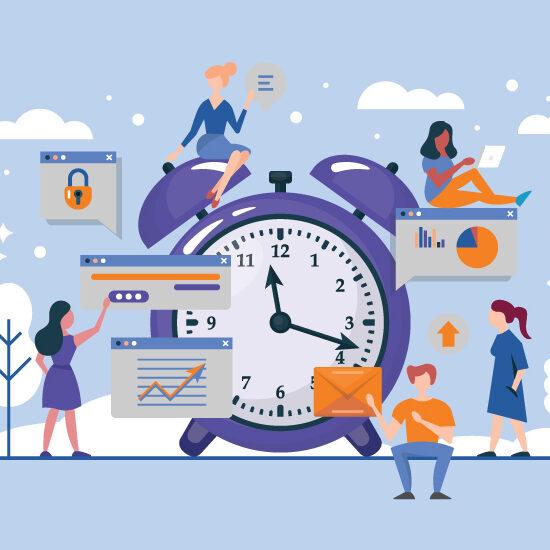
Learning to Say No: Protecting Your Time
In the world of freelancing, where opportunities seem endless and every project can feel like a stepping stone to success, learning to say no is a crucial skill. It might feel uncomfortable at first, especially when you’re eager to please clients or worried about missing out on potential work. However, saying no is not just about rejecting requests; it’s about valuing your time and protecting your well-being.
First, recognize that your time is a limited resource. Every project you take on requires an investment of energy, focus, and creativity. Here are some key reasons why it’s essential to be selective about the work you accept:
- Quality Over Quantity: Focusing on fewer projects allows you to deliver high-quality results, which can lead to repeat business and referrals.
- Avoiding Burnout: Taking on too much can lead to stress and exhaustion. Maintaining a manageable workload helps you stay energized and productive.
- Aligning with Your Goals: Every project should align with your career objectives. Saying no to misaligned opportunities keeps you on track.
Next, establish clear criteria for the projects you will accept. Consider factors such as:
| Criteria | Why It Matters |
|---|---|
| Budget | Ensure your time is compensated fairly. |
| Timeline | Determine if you can realistically meet deadlines without sacrificing quality. |
| Interest | Choose projects that excite you to maintain passion in your work. |
| Client Relationship | Prioritize clients who value and respect your expertise. |
When you receive a request that doesn’t meet your criteria, practice saying no gracefully. You might say something like, “Thank you for considering me for this project, but I have to decline at this time.” This approach is polite yet firm, ensuring you maintain professionalism while setting boundaries. Additionally, consider providing a referral to another freelancer who might be a better fit. This not only helps the client but also strengthens your network.
Lastly, remember that every time you say yes to something that drains you, you are, in effect, saying no to time spent on projects that inspire you. Embrace the power of no as a means to carve out space for growth, creativity, and meaningful work. The more you practice, the easier it becomes, leading to a more fulfilling freelance career and a healthier work-life balance.

Avoiding the Trap of Overcommitment
As freelancers, it’s tempting to say “yes” to every opportunity that comes our way, driven by the fear of missing out or the desire to please clients. However, overcommitting ourselves can lead to a cascade of problems, including missed deadlines, poor work quality, and ultimately, burnout. To maintain a sustainable workload, it’s essential to establish clear boundaries and prioritize effectively.
One effective strategy is to assess your current commitments before taking on new projects. Consider using a simple checklist to evaluate whether you can handle additional work:
- Current Workload: Am I at capacity with existing projects?
- Deadlines: Are my upcoming deadlines manageable?
- Energy Levels: Do I have the mental and physical energy to take on more tasks?
- Personal Time: Will I still have time for personal activities and self-care?
Setting realistic expectations with clients is equally crucial. When discussing project timelines and deliverables, make sure to communicate your availability and outline a timeline that aligns with your current workload. This not only helps in preventing overcommitment but also builds trust and respect with your clients. Don’t hesitate to suggest a longer timeline if needed; most clients appreciate honesty over rushed work.
Another key practice is to set firm boundaries around your working hours. Designate specific time blocks for work and ensure you stick to them. By compartmentalizing your work time, you can create a rhythm that allows for both productivity and necessary breaks. Here’s a quick way to visualize your schedule:
| Day | Work Hours | Breaks |
|---|---|---|
| Monday | 9 AM – 5 PM | 2 x 15 min |
| Tuesday | 10 AM – 4 PM | 1 x 30 min |
| Wednesday | 9 AM – 5 PM | 2 x 15 min |
| Thursday | 10 AM – 4 PM | 1 x 30 min |
| Friday | Flexible | As needed |
Regularly reviewing your workload can also help you identify patterns. Are there certain types of projects that consistently drain you? Or perhaps clients who impose unrealistic demands? By recognizing these trends, you can proactively avoid similar situations in the future. Don’t be afraid to decline projects that don’t align with your goals or that you know will lead to overwhelm.
Ultimately, learning to say no is a powerful skill for any freelancer. With practice, you’ll find it easier to turn down opportunities that don’t serve your interests or that threaten your well-being. Remember, every “no” paves the way for a more fulfilling “yes” down the line. By prioritizing your time and energy, you can foster a sustainable freelance career that thrives without the weight of overcommitment.
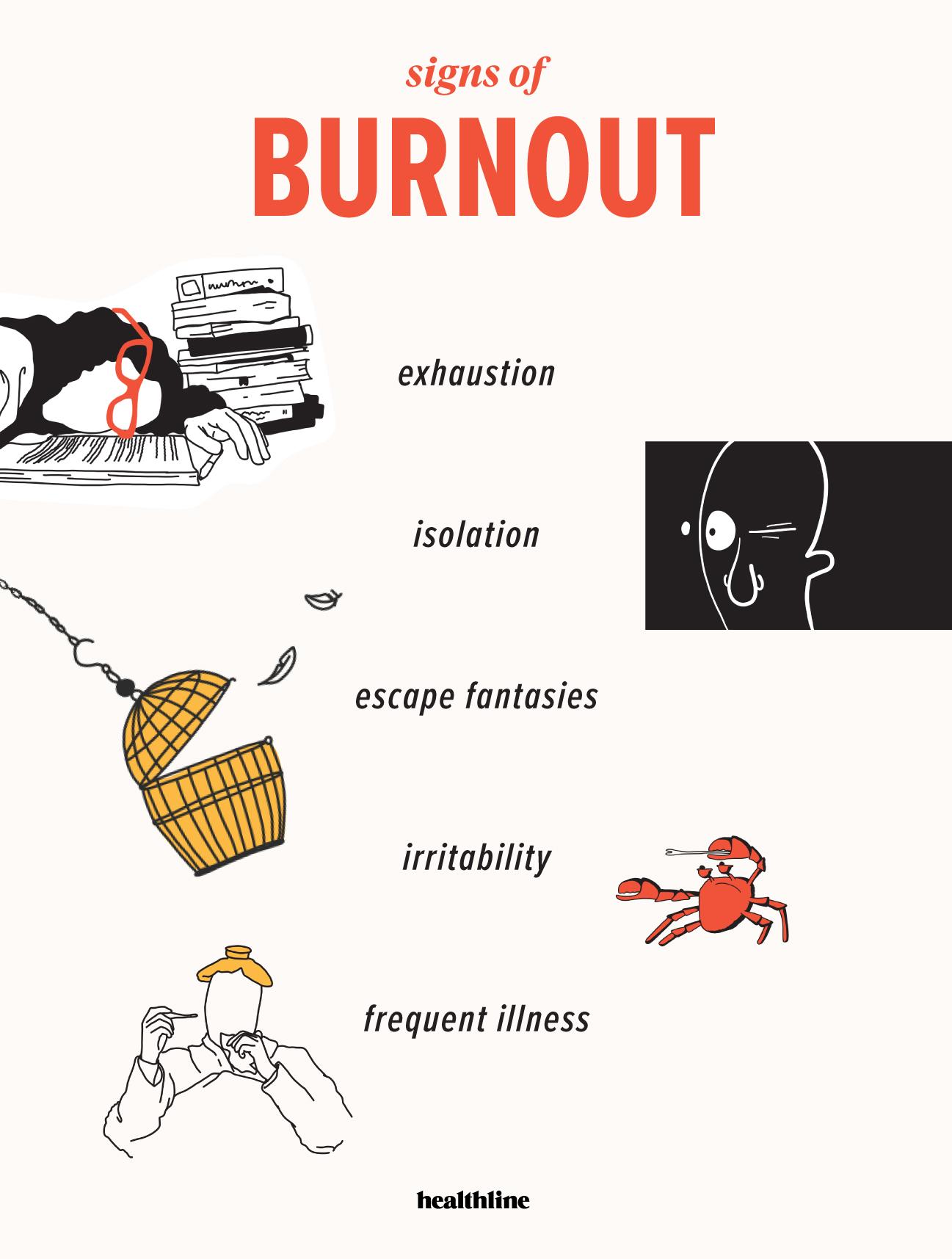
Recognizing the Signs of Burnout Early
Burnout can creep up on anyone, especially freelancers juggling multiple clients and deadlines. Recognizing the early signs is essential to prevent it from taking a toll on your mental and physical well-being. Here are some key indicators to watch for:
- Chronic Fatigue: Feeling drained, even after a full night’s sleep, can signal that your body is overwhelmed.
- Decreased Productivity: If tasks that once took hours now feel insurmountable, your motivation may be waning.
- Increased Irritability: A short temper or feeling easily frustrated with clients or projects can indicate that stress is piling up.
- Neglecting Self-Care: Skipping meals, exercise, or relaxation time? It’s a clear sign you might be prioritizing work over your health.
- Feelings of Detachment: If you find yourself feeling disconnected from your work or clients, it might be time to reassess your workload.
It’s not just about recognizing these signs; it’s about taking actionable steps to address them. Start by conducting a self-assessment. Take a moment to reflect on your current workload and emotional state. Consider keeping a journal to track your feelings and productivity levels over time. This can provide insight into patterns that may signal impending burnout.
Another effective strategy is to establish boundaries. Freelancers often struggle with work-life balance, but setting clear limits on your availability can help. Designate specific hours for work and stick to them. Communicate these boundaries to your clients to manage their expectations and protect your personal time.
Additionally, don’t underestimate the power of breaks. Incorporate short, regular breaks into your schedule to recharge. Instead of powering through hours of work, allow yourself time to step away and reset. A quick walk, meditation session, or even just a few deep breaths can make a world of difference in maintaining your energy levels.
Here’s a simple table to help you identify and respond to the signs of burnout:
| Signs of Burnout | Suggested Action |
|---|---|
| Chronic Fatigue | Prioritize rest and sleep |
| Decreased Productivity | Break tasks into smaller steps |
| Increased Irritability | Practice mindfulness techniques |
| Neglecting Self-Care | Schedule time for self-care activities |
| Feelings of Detachment | Reconnect with your passions |
By being proactive and attentive to these early warning signs, you can create a more sustainable work environment that enables you to thrive as a freelancer. Prioritizing your mental health is not just beneficial for you; it also improves your productivity and creativity in the long run.
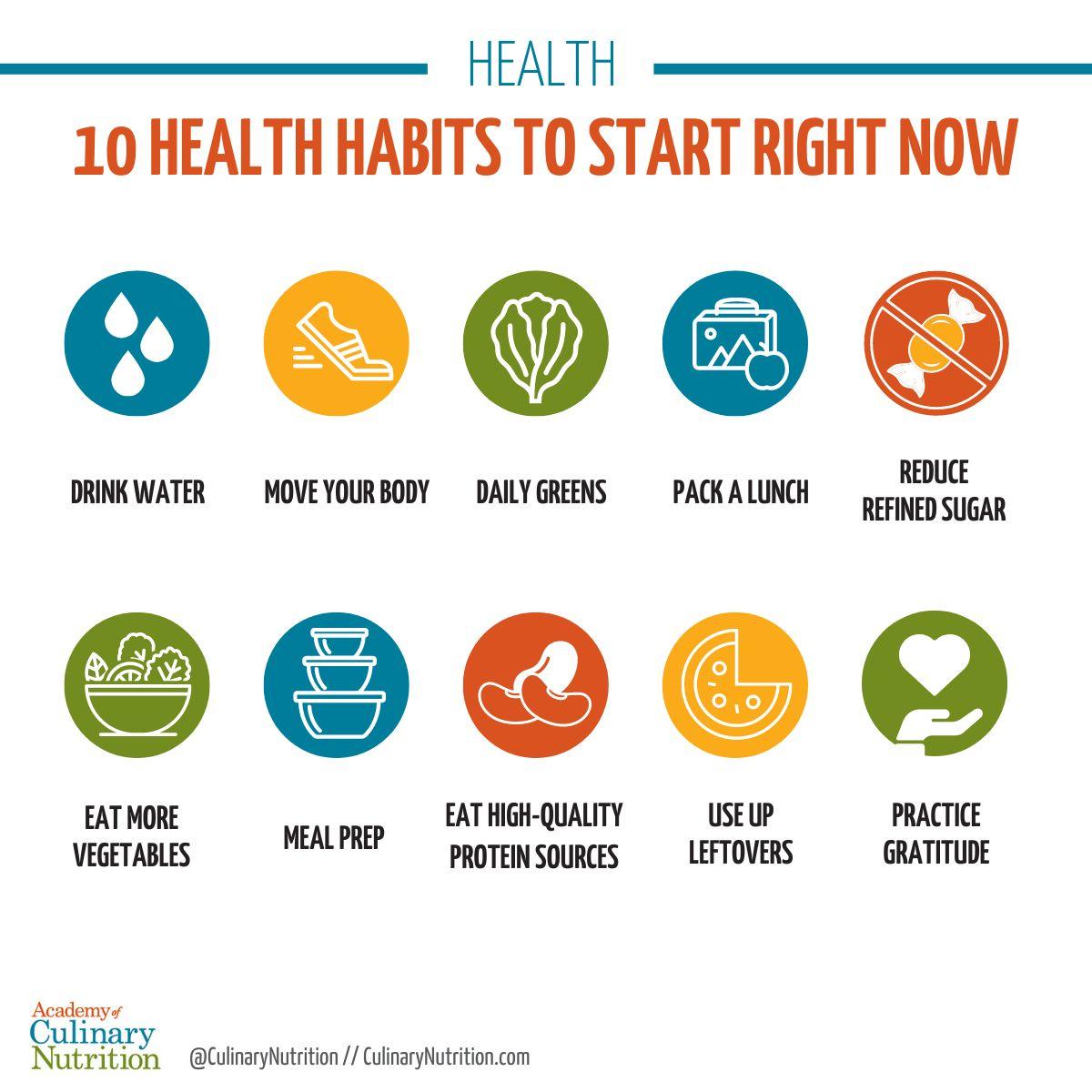
Incorporating Healthy Habits into Your Routine
In the hustle and bustle of freelance life, it’s easy to prioritize work over well-being. However, integrating healthy habits into your daily routine can significantly enhance your productivity and stave off burnout. Here are some practical strategies to help you make wellness a priority while juggling your freelance commitments.
Start Your Day with a Morning Ritual: Begin each day with a consistent morning routine that sets a positive tone. Whether it’s a short workout, meditation, or a nutritious breakfast, choosing activities that uplift you can help boost your energy and focus for the day ahead.
Stay Hydrated: It’s surprising how often we forget to drink enough water when we’re engrossed in work. Keep a water bottle at your desk to remind yourself to sip throughout the day. Hydration can improve concentration, enhance mood, and even help with decision-making.
Take Regular Breaks: Working for long periods without breaks can lead to burnout and decreased productivity. Incorporate short breaks into your schedule to refresh your mind. Use techniques like the Pomodoro Technique—work for 25 minutes, then take a 5-minute break—to keep your energy levels high.
Incorporate Movement: Sitting for hours on end isn’t just bad for your back; it can also sap your energy and creativity. Try to incorporate movement into your day, whether it’s a quick series of stretches, a walk around the block, or even a full workout session. This keeps your blood flowing and your mind sharp.
Mindfulness and Meditation: Taking a few minutes for mindfulness or meditation can work wonders for your mental clarity and stress levels. Apps like Headspace or Calm can guide you through quick sessions that fit easily into your busy schedule.
Nutrition Matters: Fueling your body with the right foods can impact your performance. Aim for meals that are rich in nutrients and energy-boosting properties. Consider meal prepping to make healthy eating simpler during hectic workdays. Here’s a quick table of snack ideas:
| Healthy Snack | Benefits |
|---|---|
| Greek Yogurt | High in protein and probiotics |
| Almonds | Rich in healthy fats and vitamin E |
| Fruit Smoothie | Full of vitamins and hydration |
| Carrot Sticks with Hummus | Good source of fiber and protein |
Prioritize Sleep: It’s tempting to sacrifice sleep for extra work hours, but rest is crucial for productivity and health. Aim for 7-9 hours of quality sleep per night. Establishing a bedtime routine can help signal to your body that it’s time to wind down.
Connect with Others: Freelancing can be isolating, so make time to connect with friends or fellow freelancers. Regular social interactions can provide support and motivation. Consider virtual coffee breaks or co-working sessions to maintain those connections.
By weaving these healthy habits into your freelance routine, you’ll not only enhance your work-life balance but also create a sustainable and enjoyable career. Remember, taking care of yourself is not a luxury; it’s a necessity for long-term success.

Finding Balance Between Work and Personal Life
Finding equilibrium between work obligations and personal pursuits is crucial for freelancers who often juggle multiple projects simultaneously. The key to success lies in establishing boundaries that protect your time and energy, ensuring you can deliver your best work while also enjoying life outside of your career.
One effective strategy is to create a dedicated workspace. Having a specific area in your home that is just for work can help you mentally separate your professional tasks from personal activities. This physical boundary reinforces the idea that when you are in that space, you are in work mode. Conversely, when you step away, you’re free to focus on your personal life. A well-defined workspace can lead to increased productivity and a clearer mind.
Setting clear working hours is another essential tactic. Freelancers often fall into the trap of working whenever the inspiration hits, which can lead to burnout. Establishing a consistent schedule helps in maintaining a routine, making it easier to switch off when your workday ends. Consider the following tips to help in this area:
- Define your peak productivity hours: Identify when you work best and schedule your most challenging tasks during those times.
- Communicate your schedule: Let clients know your availability to manage expectations.
- Use a calendar: Block out time for work and personal activities alike to visualize your commitments.
Incorporating breaks into your day is vital for maintaining energy and focus. Short, scheduled breaks can enhance your overall productivity and creativity. Taking time to step away from your screen allows your mind to recharge and can lead to fresh ideas when you return. Try these methods for effective breaks:
- Set a timer: Use techniques like the Pomodoro Technique to ensure you take regular breaks.
- Physical activity: A quick walk or some stretching can do wonders for your mental clarity.
- Meditation or deep breathing: These practices can help center your mind and reduce stress.
Don’t forget to prioritize personal time just as you would a client meeting. Schedule activities that bring you joy, whether that’s family time, hobbies, or self-care. Remember, investing in yourself is not just permissible; it’s essential for long-term success. Creating a weekly plan that includes both work and personal activities can help ensure you’re not neglecting either aspect of your life.
Lastly, consider the impact of technology on your work-life balance. While tools like email and messaging apps enhance communication, they can also blur the lines between work and personal time. To combat this, try implementing ‘tech-free’ hours where you disconnect from work-related communications. This can help you mentally recharge and enjoy the moments that truly matter.
| Tip | Benefit |
|---|---|
| Dedicated Workspace | Mental separation of work and personal life |
| Clear Working Hours | Improved routine and productivity |
| Regular Breaks | Enhanced focus and creativity |
| Prioritize Personal Time | Increased happiness and fulfillment |
| Limit Technology | Mental recharging and reduced stress |

Embracing Flexibility Without Losing Structure
Freelancing offers a unique opportunity to mold your work environment and schedule to suit your lifestyle. However, without a solid framework in place, that freedom can quickly turn into chaos. Striking a balance between flexibility and structure is essential for maintaining productivity and preventing burnout. Here’s how you can achieve that balance.
First and foremost, set clear boundaries. Define specific working hours and communicate them to your clients. This not only helps you manage your time effectively but also sets expectations for others. Consider using a calendar tool to block out your availability, providing a visual cue for both you and your clients. This practice ensures that your work-life balance remains intact.
Next, establish a consistent daily routine. While it might feel tempting to dive into work whenever inspiration strikes, a structured routine can enhance your focus and efficiency. Incorporate elements such as:
- Morning planning sessions to outline daily goals
- Designated breaks to recharge and avoid fatigue
- Evening reflections to assess what worked and what didn’t
Another effective tactic is to utilize project management tools. These platforms help you stay organized, ensuring that your tasks are prioritized and deadlines are met. Tools like Trello, Asana, or Notion can be game-changers in keeping your projects on track. Use them to create a visual workflow that accommodates changes without derailing your entire schedule.
Incorporating time-blocking into your day can also be a game-changer. By allocating specific time slots for different tasks, you can fully immerse yourself in one project at a time. This approach minimizes distractions and helps you maintain momentum, all while allowing for flexibility if adjustments are needed. Here’s a simple example of how a time-blocked day might look:
| Task | Time Block |
|---|---|
| Email Responses | 9:00 AM – 9:30 AM |
| Client Work | 9:30 AM – 12:00 PM |
| Lunch Break | 12:00 PM – 1:00 PM |
| Content Creation | 1:00 PM – 3:00 PM |
| Networking/Outreach | 3:00 PM – 4:00 PM |
Lastly, don’t forget to review and adjust your strategies regularly. Taking a step back to evaluate what’s working and what isn’t can provide crucial insights. Are you consistently missing deadlines? Do you feel overwhelmed? Making necessary adjustments can keep you on track without stifling your creativity. Regularly check in with yourself to ensure you’re maintaining the balance that works best for you.
In essence, by integrating structure into your flexible lifestyle, you can create a harmonious workflow that supports both your professional goals and personal well-being. Embrace the freedom of freelancing while ensuring that your work remains organized and productive.
Frequently Asked Questions (FAQ)
Q: Why is time management particularly important for freelancers?
A: Time management is crucial for freelancers because they often juggle multiple clients and projects without the structure of a traditional workplace. Effective time management helps you meet deadlines, maintain productivity, and avoid the stress that can lead to burnout. By managing your time well, you can create a balanced workload that allows for both work and personal time.
Q: How can I start managing my time more effectively as a freelancer?
A: A great starting point is to set clear goals. Break down larger projects into smaller, manageable tasks. Use tools like calendars or to-do lists to prioritize your work. Also, consider implementing time-blocking, where you dedicate specific blocks of time for focused work without distractions. This approach not only helps you stay organized but also provides a sense of accomplishment as you check off tasks.
Q: What are some common time-wasting habits freelancers should avoid?
A: Freelancers often fall into the trap of multitasking, which can actually reduce productivity. Additionally, getting sidetracked by social media or constantly checking emails can eat away at your available time. Setting boundaries, such as designated work hours and breaks, can help minimize these distractions and keep you focused on what matters.
Q: How can I ensure I take breaks without losing momentum?
A: It might seem counterintuitive, but taking breaks actually boosts productivity! Use techniques like the Pomodoro Technique, where you work for 25 minutes and then take a 5-minute break. This method keeps your mind fresh and helps you stay engaged with your work. Plus, during those breaks, step away from your screen to recharge—grab a snack, stretch, or take a quick walk.
Q: What role does setting boundaries play in preventing burnout?
A: Setting boundaries is essential for maintaining a healthy work-life balance. As a freelancer, it’s easy to let work spill over into your personal time, which can quickly lead to burnout. Communicate your availability clearly to clients, and stick to your scheduled work hours. This not only protects your personal time but also sets professional expectations.
Q: Can technology help with time management, and if so, how?
A: Absolutely! There are countless apps and tools designed specifically for freelancers. Project management tools like Trello or Asana can help you keep track of tasks and deadlines, while time-tracking apps like Toggl can give you insights into how you spend your time. Find the tools that work best for you, and don’t hesitate to experiment with different options to enhance your productivity.
Q: What are some signs that I might be heading towards burnout?
A: Some common signs of burnout include chronic fatigue, irritability, a sense of detachment from your work, and a decline in performance. If you find yourself feeling overwhelmed or losing motivation, it’s essential to take a step back. Acknowledge these feelings and reevaluate your workload or schedule to make necessary adjustments.
Q: What should I do if I start feeling overwhelmed as a freelancer?
A: First, take a deep breath! It’s perfectly normal to feel overwhelmed at times. Try to identify the sources of your stress and prioritize your tasks. If possible, delegate or postpone less critical projects. Additionally, don’t hesitate to reach out to fellow freelancers or communities for support and advice. Sometimes, just talking about your challenges can lighten the load.
Q: How can I maintain long-term motivation in my freelance career?
A: Maintaining motivation can be achieved by setting both short-term and long-term goals, celebrating small wins, and continuously seeking new challenges to keep things fresh. Also, make time for professional development—whether it’s learning a new skill or connecting with other freelancers. This not only enhances your capabilities but also keeps your freelance journey exciting.
Q: What final advice do you have for freelancers looking to improve their time management and avoid burnout?
A: Remember that managing your time effectively is a skill that takes practice! Be patient with yourself, and don’t be afraid to adjust your approach as needed. Prioritize self-care, establish a routine, and always make time for activities that recharge you. A healthy, balanced mindset is key to thriving as a freelancer in the long run!
Key Takeaways
And there you have it—21 essential time management tips to help you navigate the bustling world of freelancing while keeping burnout at bay. Remember, it’s not just about working harder; it’s about working smarter. By implementing these strategies, you’ll not only boost your productivity but also create a healthier work-life balance that allows you to thrive in your freelance career.
Take a moment to reflect on which tips resonate with you the most and how you can start incorporating them into your daily routine. It may feel overwhelming at first, but small, consistent changes can lead to significant results.
So, are you ready to reclaim your time and energy? Embrace these tips, prioritize your well-being, and watch your freelance journey flourish. After all, a happier, healthier you is the key to sustained success. Here’s to working efficiently and enjoying every moment along the way!




